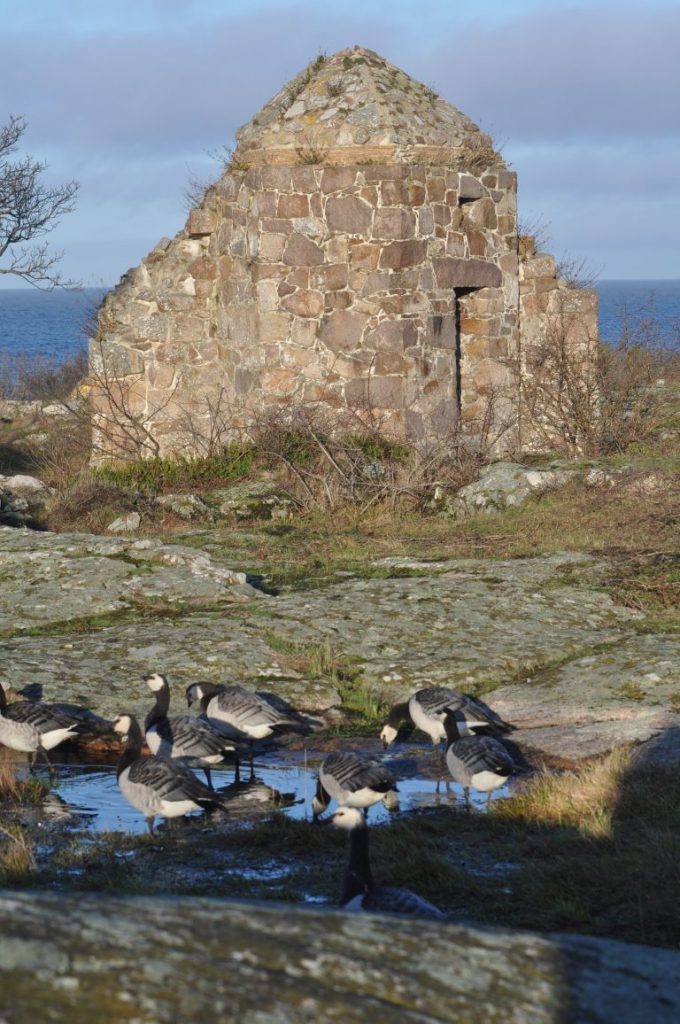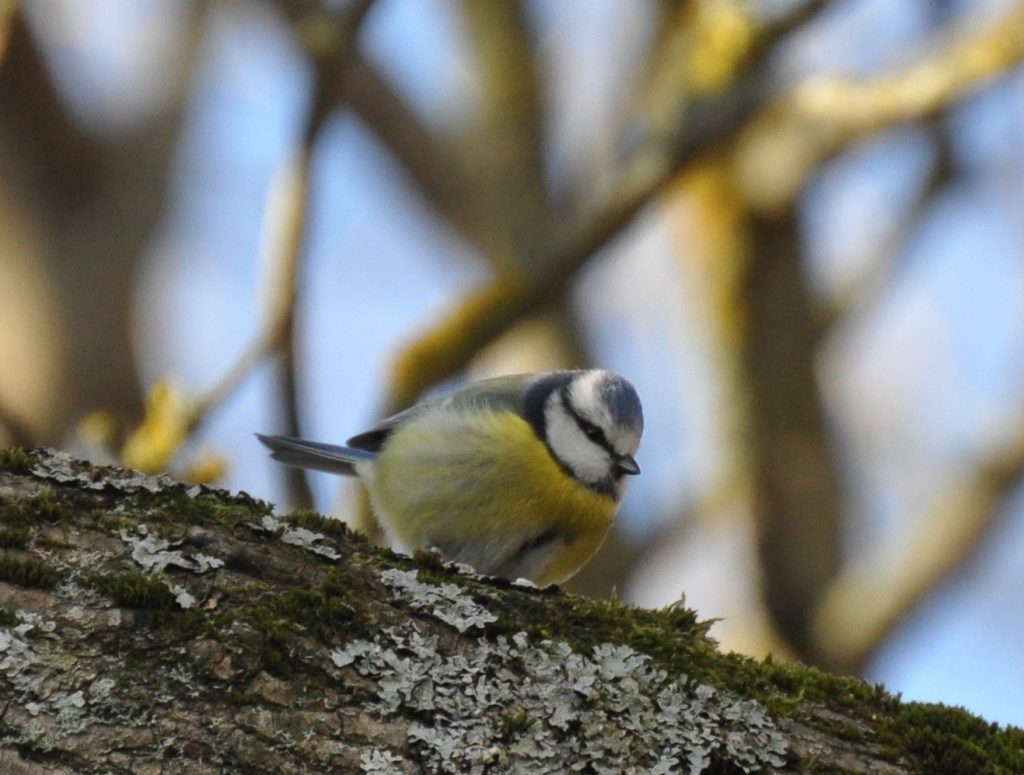The breeding birds
With more than 15,000 pairs of breeding birds and large populations of migratory birds, Ertholmene could also be called the bird islands. The many birds breed at Ertholmene because the two basic requirements for breeding grounds are met here: food and peace.

Most of the breeding birds are sea or coastal birds, such as razorbill, guillemot, herring gulls and eider. Razorbill and guillemot are genuine sea birds that only go ashore in breeding season.
Herring gulls, razorbills and guillemots nest on Græsholm, which is a bird sanctuary and closed to the public. The majority of eider nest on the inhabited islands, even in people’s gardens and close to walking paths.
Eider primarily eat blue mussels, while razorbills and guillemots prefer sprat – a small herring fish found in large numbers in the waters around the islands.
Soon after the eider ducklings hatch, they swim with the females in little flocks to Bornholm, where there is more food for the young in the form of beach fleas and small mussels.

During the eider nesting period, 1 April–15 June, it is not permitted to go beyond the walls.
See our Island Rules for more information.
Over the years, 52 different species of breeding bird have been registered in Ertholmene, but only 25 species breed regularly on the islands. The most common small birds that breed here are blackbird, wagtail, linnet, house sparrow, barn swallow and house martin.
Christiansø has had its own field station for more than 40 years. The field station studies the birds and nature on the islands.
Migratory birds

Barnacle geese 
Blue tit
Every year, millions of Scandinavian small birds fly to or from their winter quarters in warmer climates. The birds fly for thousands of miles to make sure they are always where the weather and feeding conditions suit them best.
Some stop here on their way from the forests of Finland to Africa. Others migrate shorter distances, such as from southern Sweden to Germany.
For these birds, Ertholmene is a resting site along their migration route across the Baltic Sea. Most birds migrate at night. If they find themselves over the sea in the morning, they seek out the closest land – and this will often be Ertholmene, which lies in a large body of water.
The spring migration to the islands starts in March, peaks in April–May and ends in June. The autumn migration starts in August, peaks in September–October and ends in November.
During the migration periods, thousands of migratory birds may rest on the islands, with particularly large populations of robin, goldcrest, willow warbler and thrush. On peak migration days, the islands can seem alive with little birds.
The weather plays a major role in the size of the resting bird populations, and generally, the numbers will be highest on calm, misty days.
Most migratory birds only visit briefly. This is because there is not much food for them on Ertholmene. This is especially true in late autumn and early spring. In inclement weather, the birds can be so weakened when they arrive that many die.
Migration is extremely taxing on the physiques of the little birds. Only the strongest survive.
Christiansø Field Station keeps track of the birds on the island.

